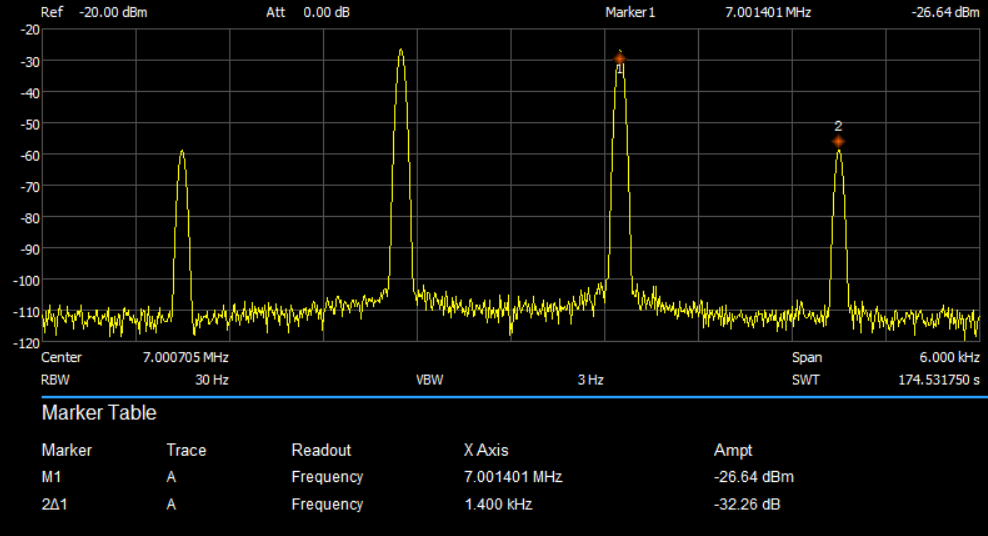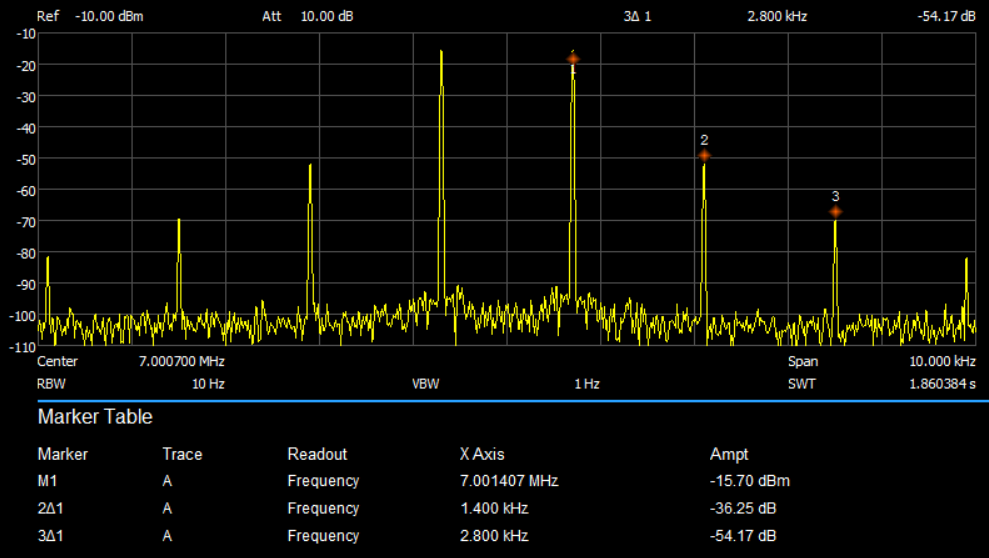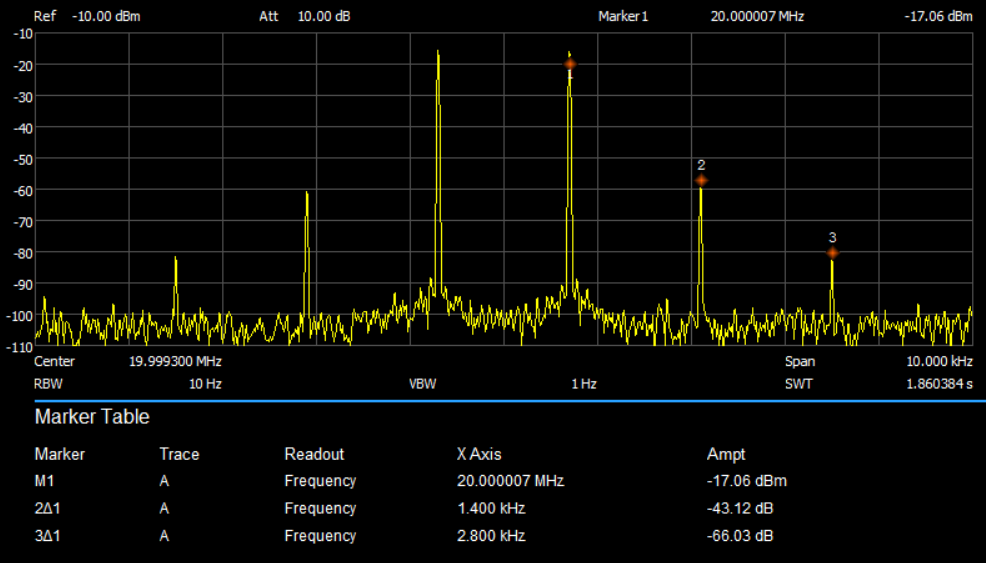Sidebar
Table of Contents
1kW LDMOSFET power amplifier for short wave
IM3 measurements and the quiescent current
When it comes to IM3 measurements of PAs, the adage “if you measure crap, you measure crap” is all too true and valid. Most of the time and work falls on ruling out erroneous measurements, and that is anything but easy. Therefore, the following measurement results should be viewed with healthy skepticism even though I did my best.
First the quality of the 2-tone generator was checked, which I realized with the help of a 2-channel Rigol function generator and a frequency independent summing generator. The result was very good, I could not measure the IM3 products, they were below the resolution of the analyzer.
As control transmitter an IC7300 was used. This is a pure digital radio. As it turned out, it is anything but ideal for IM3 measurements. Due to the digital processing it sends all kinds of tails across the useful channel. The IM3 products of the IC7300 were still detectable, at -28dBc (28dB below the useful signal) on 7MHz, and that was at low power. At high power (100W) the IM3 of the IC-7300 was better, but I can't drive my PA at 100W.
Rule of thumb:
as a rough guide, audible distortion starts at an IM3 worse than -20dBc. Above 20dBc you won't hear it and above 30dBc I would consider the unit to be quite good. An IM3 below 20dBc should be avoided.
From this point of view the IC-7300 is quite usable, but not ideal for the measurement, because it would falsify the result.
the PA was therefore driven directly from the generator, so I don't get the full output power, but for this measurement it was good enough for me.
Quiescent current measurement LDMOS PA with a LDMOS transistor:
the measurement of the IM3 at different quiescent currents was done at 7 MHz with the following result:
| quiescent current [A] | IM3 [dBc] |
| 0,1 | 19,6 |
| 0,5 | 21,0 |
| 1,0 | 23,5 |
| 1,5 | 27,2 |
| 2,0 | 29,8 |
| 2,5 | 31,1 |
of course the quiescent current should be as small as possible, at e.g. 2A the power dissipation is already 100Watt without useful signal.
I use 1,5A quiescent current. Stations which have a SDR certify me a clean signal in the waterfall, with it I am content.
With this 1.5A I still measured on different bands:
160m … -23 dBc\
80m … -21,6 dBc
40m … 27.2 dBc
10m … 25 dBc
These measurements were performed without any negative feedback, i.e. without RC links between drain and gate.
With a negative feedback you can improve the IM3 significantly, but you will get into a bad trap: If something goes wrong at the output (e.g. antenna falls down or the connector breaks etc.), the high voltages generated at the drain will couple back to the gate. Many OMs have already made the painful experience that the BLF188XR can not withstand this, so that 200 Euro go down the drain. Everyone who had to make this experience immediately removed the negative feedback. I have therefore installed none at all and can live well with the above values after the repeats are perfect.
IM3 measurement LDMOS PA with 2 LDMOS transistors:
this picture shows the IM3 at a total quiescent current of 4A (2A per transistor).
In the middle are the two carriers at 7.0 and 7.0014 MHz (1.4 kHz difference) and on the right and left are the IM products. These are 32 dB below the carrier. For a PA without any negative feedback, this is quite a remarkable value.
The IM3 seems to be frequency dependent, at higher frequencies it gets even better, but it is unclear if this is due to my measurement setup. Stations with an SDR and waterfall pattern always give me very good repeats. I finally reduced the quiescent current to a total of 2A (1A per transistor) because the signal is still good here and the repeats are flawless.
That the IM3 is a little better than with the 1-transistor PA was to be expected.
IM3 at 2A (2x 1A) Quiescent current: -32.26 dBc
IM3 at 3A (2x 1.5A) quiescent current: -36.25 dBc
and here still at 20 MHz with otherwise same settings.
IM3 at 3A (2x 1.5A) quiescent current: -43.12 dBc
why it is significantly better on 20 MHz than on 7 MHz is unclear to me at the moment, there may be something to explore here.




